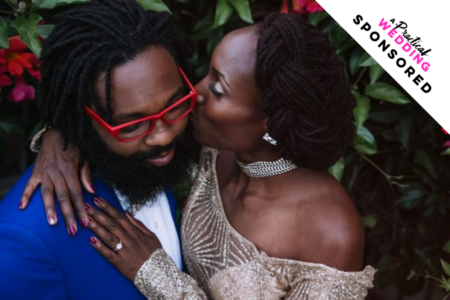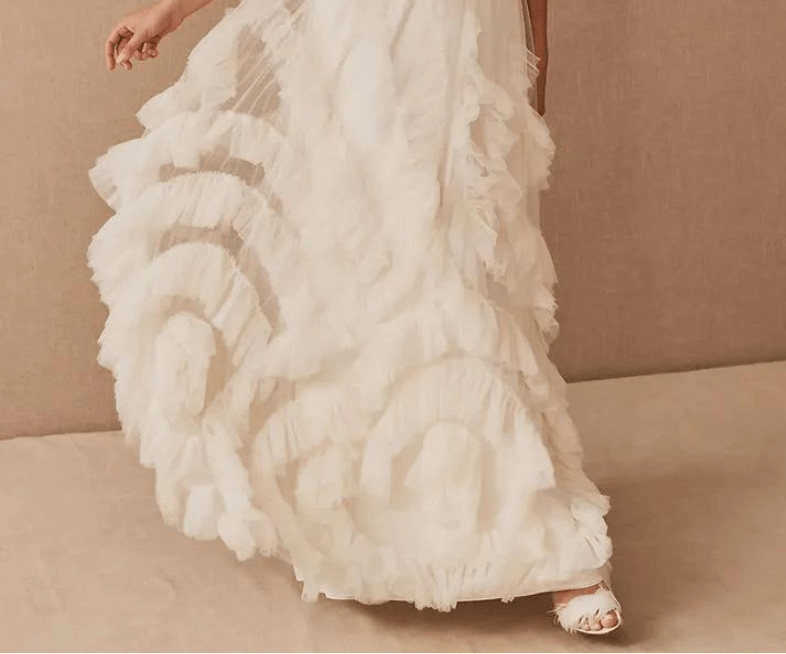Interfaith and intercultural weddings are HARD, y’all. I know, because I had one. If you looked at our wedding on the surface, you would have seen a lovely progressive Jewish service. But what you didn’t see were the years of heartache that led up to that moment: the struggling of two people with deeply-held traditions and cultures, trying to find a way to work together. And guess what? It doesn’t magically get easy when the wedding is over. (Example: I recently found out that if you’re not raised High WASP, you are not given baby china at birth!? At Passover this weekend, someone had baby china out as a key dish, and I was the only one who knew what it was. Needless to say, these things continue to be baffling to both of us.) But the hard stuff is also the best stuff. It’s the dig deep stuff. So today I’m thrilled to give you intern Zen, talking about how both weddings are real (but secretly one is a little more real…)
My parents have had the interesting fate of marrying two children off to Catholic partners. There’s a small but staunch community of Christians in Malaysia, but my family comes from a typically Buddhist/Taoist/syncretic Chinese folk religion background, so church weddings are still a fairly new thing to us.
The precedent in my immediate family was my brother and sister-in-law, who got married over two days, with the Catholic wedding on the Saturday and the Chinese wedding on the Sunday. After the Catholic ceremony my mother came out of the church heaving a “well that’s over” sigh:
“Now, at the real wedding tomorrow …” she said.
It’s been an issue. I’m gonna be honest here, right. I want the Malaysian wedding to be the real wedding. I would ideally have liked it to happen first, but the dates didn’t work out that way. (We got the date for the Malaysian wedding by the usual means of astrological determination—you give your birth dates and times to the temple and they tell you what the “good” dates for getting married are–so there was no flexibility on that point.) So when people ask me, “Which one’s the real wedding?” I know what I want the answer to be.
But when you’re in an intercultural relationship you can’t really do that. You kind of have to recognise the legitimacy of each other’s customs (I know, right, what a bore!). Sure, the first dance and the various toasts may seem like stuff people have just made up to torment me and my family, but it’s made-up stuff that means something to my partner and his family, so if I wanna skip ’em, I better have a good reason.
It’s just part of a continuous process of negotiating each other’s expectations, though, and the differences in these expectations in an intercultural relationship aren’t what you might expect. I’ve had to come to terms with the fact that Cephas actually prefers to eat cheese sandwiches for lunch every day of his life, and it doesn’t add to his enjoyment if I sit by gazing at his plate in open dismay and saying, “Are you sure? Don’t you want something that would taste better?” Cephas has had to accept that it is seriously part of my culture to spend four hours in an eating establishment talking about nothing with my friends. (Google “mamak stall culture.” It’s a thing!)
I’m not sure you could say we’ve embraced each other’s cultures. I’ve lived in the UK for a while now, but when a zine which was publishing a story of mine wanted to identify me as a UK author I told them not to. I’m not British and I don’t want to be. Cephas may enjoy sunflower seeds in the shell with Chinese tea, but he will never be Malaysian. But we respect our differences. They’re part of our relationship. And there’s more about us that is the same than is different—otherwise we presumably wouldn’t be getting married.
When I was last home my dad sat me down for a serious You’re Getting Married So I’m Going to Give You Some Wise Dadly Advice talk.
“Your relationship with Cephas has a lot of diversity already,” he told me. “Race, culture, religion, nationality. You should try to close the gap.”
I said I’d think about it. But I’m not sure “closing the gap” is the way to deal with diversity. If growing up in a pluralistic nation has taught me anything, it’s that at a certain point you have to accept that people are just always going to be different. We will never agree—and our disagreements will be on vital, serious points, points like whether there’s a God, what women’s status in society should be, or whether the government is entitled to police the people’s morals.
Of course, I think all my opinions are the right ones, but other people can be right too. There can be different kinds of right. And even if other people are wrong—and oh, some of them are so wrong—you kind of have to live with them anyway.
That’s how I see me and Cephas, and our differences. They’re differences to live with. Different kinds of right. So maybe that’s what I’ll tell people the next time they ask about my weddings.
“Which one is the real one?”
“They’re both real,” I’ll tell them. “Different kinds of real.”
As well as sounding meaningful, this answer has the added advantage of being a bit mysterious, which will hopefully baffle people enough that they won’t think to argue with me over it. And because I’m serious about honouring the customs and usages of Cephas’s culture, I won’t say the last bit: But the Malaysian wedding is just a little bit more real than the English one. It doesn’t count if you’re just thinking it, right?






